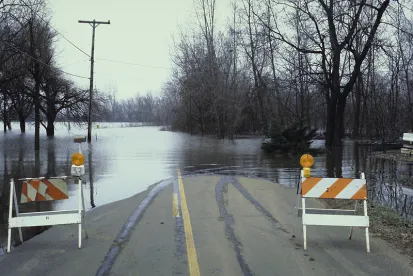On February 12, 2018, President Donald Trump released his fiscal year 2019 budget proposal entitled “An American Budget.” Though Congress will not implement the proposal in its entirety, it still demonstrates what the Trump Administration would like to see prioritized in the coming year, which does not include climate change research. President Trump’s proposal would cut the National Oceanic and Atmospheric Administration’s climate research by more than one third, which would include cutting research into sea level rise.
In the wake of federal cuts, local governments and developers need to be proactive in addressing climate resiliency. As Hurricane Sandy and Hurricane Irma have made clear, rising sea levels coupled with increased natural disasters and storm surges present an ever-increasing threat to developments along the shoreline. During the first week of 2018, the Boston area experienced record-breaking high tides during a bomb cyclone that left thousands without power and resulted in submerged cars and historic flooding. When developers are designing electrical systems for a given project, they need to keep these natural disasters in mind and be proactive by building these systems above flood levels or on roofs.
Luckily, many local governments and developers around the country are taking note. For instance, when Australian-developer Lendlease decided to build Clippership Wharf, a mixed-use development built on top of an old pier in East Boston, it made the concerted effort to plan for sea level rise. Lendlease is replacing the old concrete seawall with a “living shoreline” that includes tide pools and salt marshes that encourage plants to thrive while simultaneously acting as a buffer slowing down storm surges and high tides. And when flooding does occur on the site, the building will have a raised platform further protecting the residents and building.
While the need for climate resiliency is obvious along the shoreline, climate change goes far beyond the banks of any ocean. In the 1970s and 1980s, Tulsa, Oklahoma was ground zero for devastating 100-year floods that occurred almost every year. After one devastating storm in 1984, Tulsa decided to do something revolutionary – pursue an ambitious citywide plan to combat flooding. In an era where the word “climate change” or “global warming” was a far off and somewhat dubious concept, Tulsa managed to stay ahead of the curve by building extensive detention ponds, implementing more demanding flood maps, and paying individuals to move away from areas that experienced repeated flood damage.
Climate change has become a reality for modern cities. When deciding to invest millions of dollars in a new development or deciding how to keep their residents safe from sea level rise and storm surges, developers and local governments need to follow national good practices and focus on the ultimately necessary process of planning for the inevitable.



 />i
/>i

